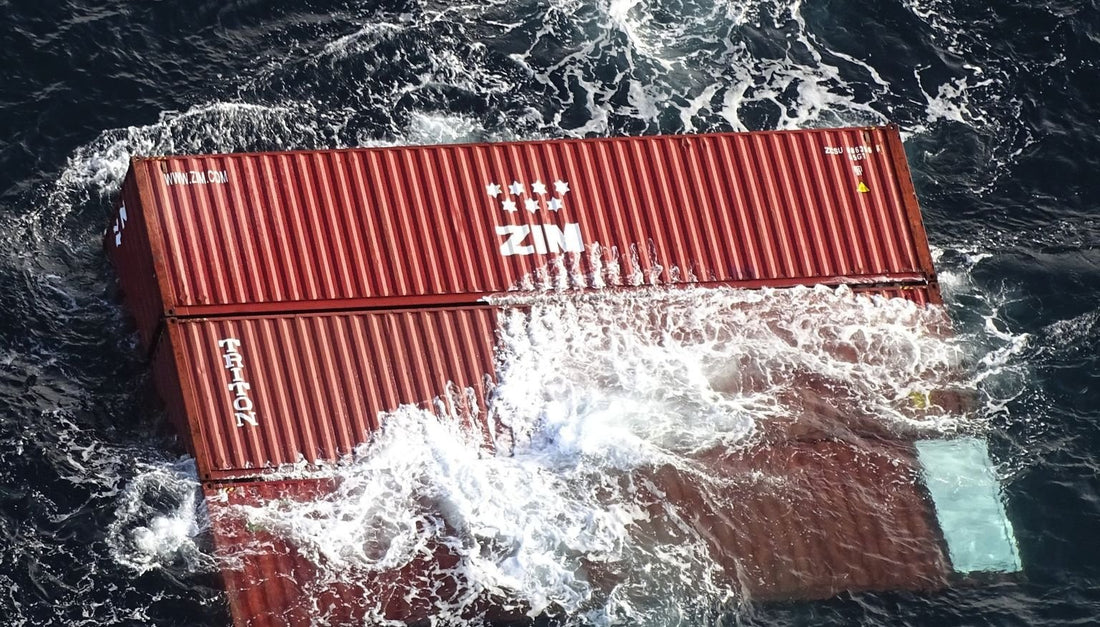
Do Shipping Containers Float?
Share
Believe it or not, shipping containers can float—at least for a while. Their design and construction allow them to stay afloat under certain conditions.
Yes, Shipping Containers Can Float… But Not Forever
The short answer is yes, shipping containers can float. That’s why, when one falls off a cargo ship, it doesn’t immediately sink to the bottom of the ocean. Instead, it may bob along for days or even weeks, depending on what’s inside.
Empty containers float quite easily because of the massive air pocket inside. A standard 20-foot or 40-foot shipping container is essentially a sealed metal box filled with air, which makes it naturally buoyant. The container’s steel walls, floor, and roof are heavy, but not heavy enough to overcome the upward force created by the trapped air—at least not immediately.
What About Loaded Shipping Containers?
This is where it gets a little more complicated. Loaded containers are a different story. Whether they float depends on the type of cargo, how it’s packed, and how watertight the container remains after it hits the water.
Let’s say you’ve got a 40-foot container filled with foam insulation or something similarly light. That might float for quite a while. But if it's full of heavy metals, machinery, or dense goods, that container could sink quickly—especially if the door seals are compromised and water starts to flood in.
In general, shipping containers that are fully loaded with heavy cargo are more likely to sink faster than empty or lightly loaded ones. But even loaded containers can sometimes float temporarily if they remain sealed and the air inside holds out long enough.
How Long Do Shipping Containers Stay Afloat?
It’s not unusual for shipping containers to float for several days. Some have been reported as staying afloat for weeks, drifting with the current before finally sinking. It all comes down to how well the container is sealed and what kind of cargo is inside.
Rust, corrosion, and damage from falling off a ship can speed up the process. Once water starts leaking into the container and displacing the air inside, it’s only a matter of time before it goes under.
Why Does It Matter?
Floating containers pose a real threat to maritime safety. They’re hard to spot from a ship’s deck or by radar, especially in rough seas. That makes them dangerous obstacles for smaller boats and even larger vessels. Some floating containers drift just below the surface, nearly invisible to the naked eye.
This is why shipping companies track lost containers closely and why some ports and regulatory agencies push for improved container security. A floating container isn’t just a hazard—it’s also an environmental concern, especially if it contains hazardous materials or non-biodegradable packaging.
What Happens When a Shipping Container Sinks?
Once a shipping container takes on enough water to lose buoyancy, it sinks. Depending on the ocean depth and the weight of the cargo, it can come to rest on the seabed or hover somewhere in the water column. That’s another safety issue: submerged containers can be difficult to detect and remove, and recovery is usually expensive and time-consuming.
There’s also the matter of pressure. As a container sinks deeper, the external pressure increases dramatically. If it wasn’t breached before, it almost certainly will be as it descends. The structural integrity of the container eventually gives out, and the cargo is released into the ocean—sometimes scattered, sometimes contained, depending on packaging.
What About Modified Shipping Containers?
Shipping containers used on land for storage, housing, or mobile offices can float too—assuming they’re not heavily modified. Add a bunch of windows, doors, or cutouts, and you’re likely compromising the airtightness. If you dropped a shipping container home into a lake, the float time would depend on how well it was sealed and whether the modifications introduced any structural weaknesses.
In flood-prone areas, some people even experiment with using containers as buoyant platforms, although this is risky and not recommended without professional engineering input. Just because a shipping container floats doesn’t mean it’s seaworthy.
Can You Use a Shipping Container as a Boat?
Some creative DIYers have used containers as the base for floating docks or tiny houseboats on calm waters, but this requires significant modification, waterproofing, and buoyancy control to be safe.
If you’re considering repurposing a container for use on the water, you’ll need to add flotation tanks, reinforcements, and possibly coatings to prevent rust and corrosion. And even then, you’re still dealing with a steel box that wasn’t designed to be a boat.
Fill out the form below for a free shipping container quote from USA Containers:
